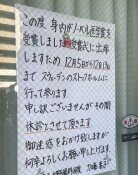Busan Port Operating Ratio Only 30%
Busan Port Operating Ratio Only 30%
Posted January. 19, 2007 03:00,
Busan Port has been a growth engine of the Korean economy by contributing to Koreas import and export trade for 130 years since its opening in 1876. Although its opening helped the country take a step further to becoming a hub of logistics of Northeast Asia, its future is not that bright.
Operating ratio is only 29.9% -
January 19 marks a year after its opening. Busan Port opened an additional three quays on the north container dock in early January. So the port has a total of six quays when adding the three that were opened January 19, 2006.
Each quay is 2km long. Moreover, the port is now equipped with 15 quay cranes, 49 yard cranes and 115 yard tractors. With its size, it can hold six 50,000 ton-container ships at the same time, equivalent to 3.6 million 20 feet-containers a year.
By the end of last year from its opening, however, it only took 238,866 containers or 19,900 a month. The figure is just 29.9% of its goal of 800,000.
Worse yet, it is expected to suffer more this year as now it has three more quays.
At present, four shipping companies regularly stop at Busan Port MSC, Kuwaits UACS, Israeli ZIM and ESL of the United Arab Emirates. Last year, they loaded and unloaded only 238,866 containers in the port, which is aiming at increasing the number to 1.32 million this year.
Incentives are needed
Observers say that to further develop the port, it needs more infrastructure and promotions.
They say that the ports first priority is to establish a logistics park to fix ships and supply parts simultaneously to create high value-added profit.
For that, a 220,000 pyeong-park (1 pyeong equals around 3.3 square meters) has been established. But experts say that the current construction on 710,000 pyeong should be completed as soon as possible.
Among the first access roads with 40% completion at the moment, the parts that should be constructed urgently are between Garak Nadeulmok and Shikman Bridge, Gyeonma Bridge behind Busan Ports logistics park, and the access road that leads to the previous North Port (South Port, Bukhang Bridge, Myeongji Bridge and Cheonmasan Tunnel).
Another barrier to the ports development is the delay of an access railroad from Noksan Station to Samrangjin Station to after 2011 from 2008. Only 88% of transportation on the road, 10% on the railway and 2% on the coast can share the transportation of Busan Port. So, if the freight union goes on strike, it will paralyze the port, seriously reducing its confidence.
Other challenges the port faces are reducing the unloading fees charged to transshipment cargos (cargos that are kept on the port and transferred to other ships heading to their destinations), adopting incentives for transshipment, reducing road transportation fees that are higher than North Port and establishing a comprehensive transportation system.
John Elliot, 42, in charge of sales of Busan Port, said, It is less competitive than Chinese ports on the cost side. Still, it has its own advantages. What we need is the governments support ranging from removing inbound and outbound fees on transshipment cargos to less construction of reckless new terminals.







